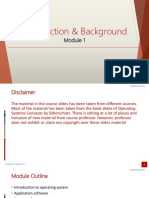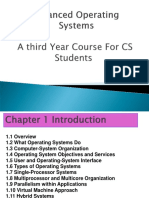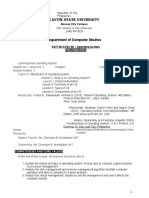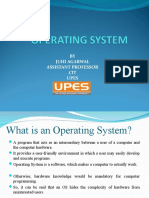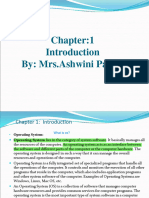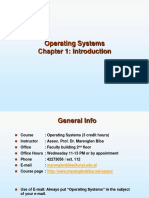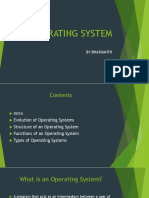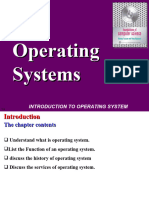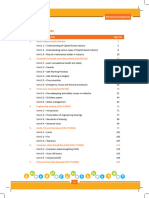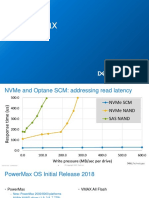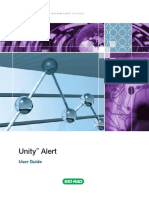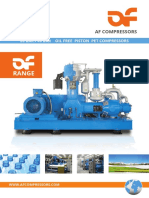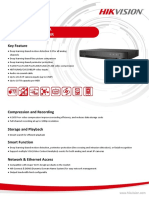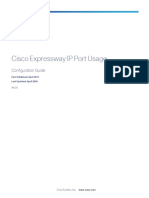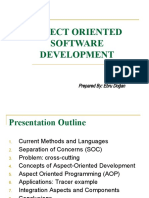0% found this document useful (0 votes)
22 views21 pagesIntroduction To Operating Systems
An operating system (OS) is a crucial software that manages computer hardware resources and acts as an interface between users and hardware. It has three main responsibilities: performing basic tasks, ensuring program and user isolation, and providing a platform for application software. The document also outlines the evolution of operating systems from early computers to modern systems, highlighting key features and considerations for choosing an OS.
Uploaded by
Abhinav YadavCopyright
© © All Rights Reserved
We take content rights seriously. If you suspect this is your content, claim it here.
Available Formats
Download as PPTX, PDF, TXT or read online on Scribd
0% found this document useful (0 votes)
22 views21 pagesIntroduction To Operating Systems
An operating system (OS) is a crucial software that manages computer hardware resources and acts as an interface between users and hardware. It has three main responsibilities: performing basic tasks, ensuring program and user isolation, and providing a platform for application software. The document also outlines the evolution of operating systems from early computers to modern systems, highlighting key features and considerations for choosing an OS.
Uploaded by
Abhinav YadavCopyright
© © All Rights Reserved
We take content rights seriously. If you suspect this is your content, claim it here.
Available Formats
Download as PPTX, PDF, TXT or read online on Scribd
/ 21









